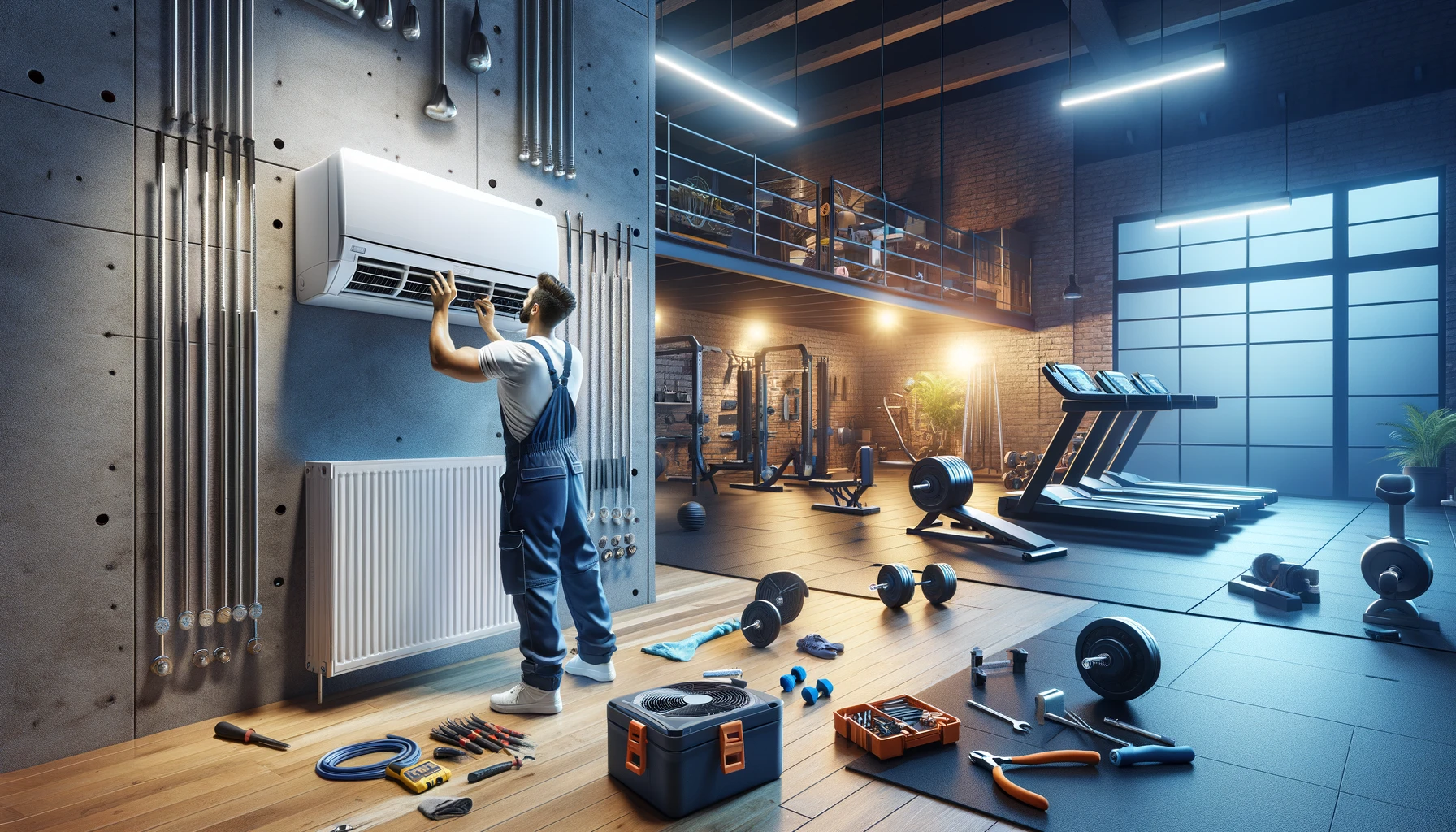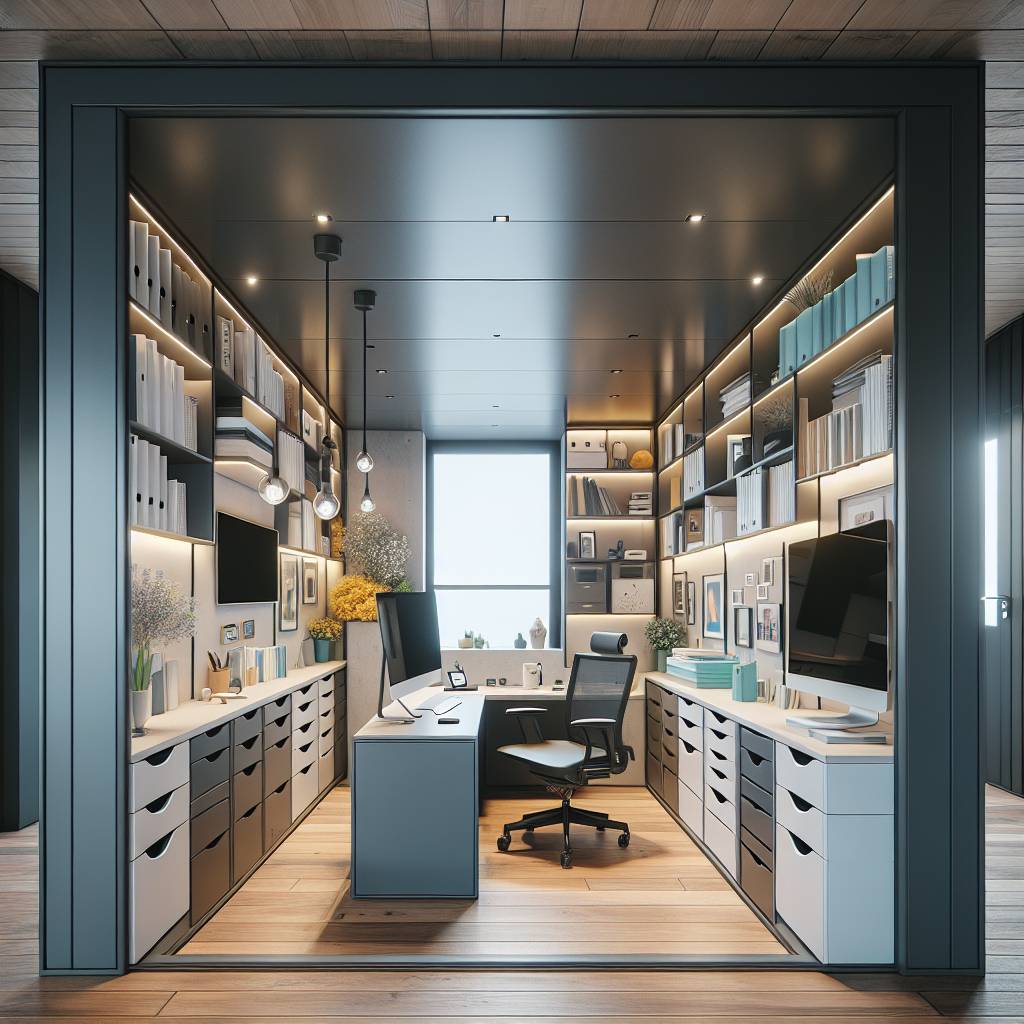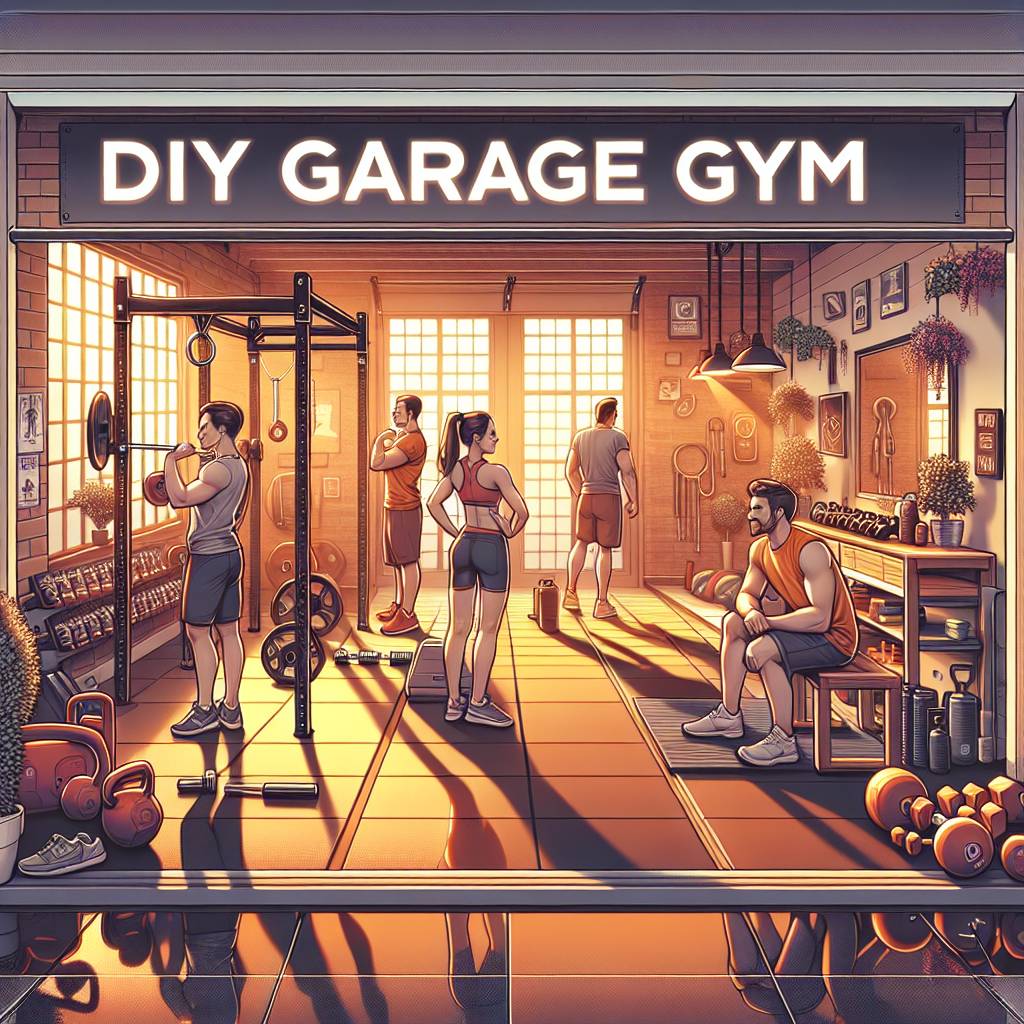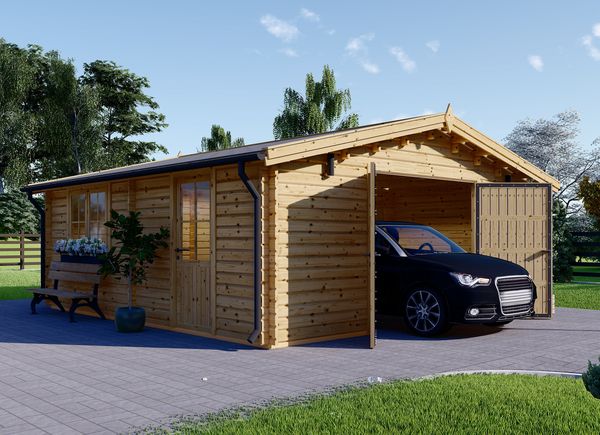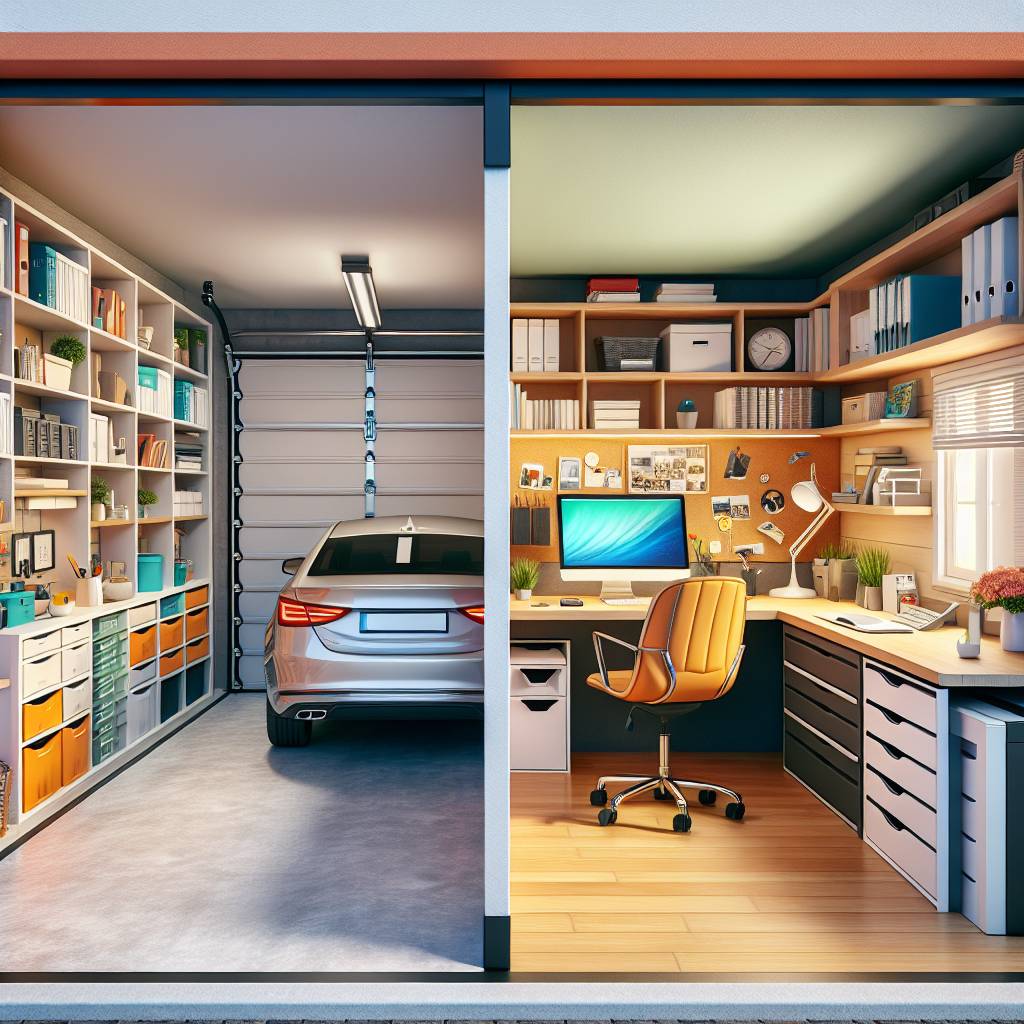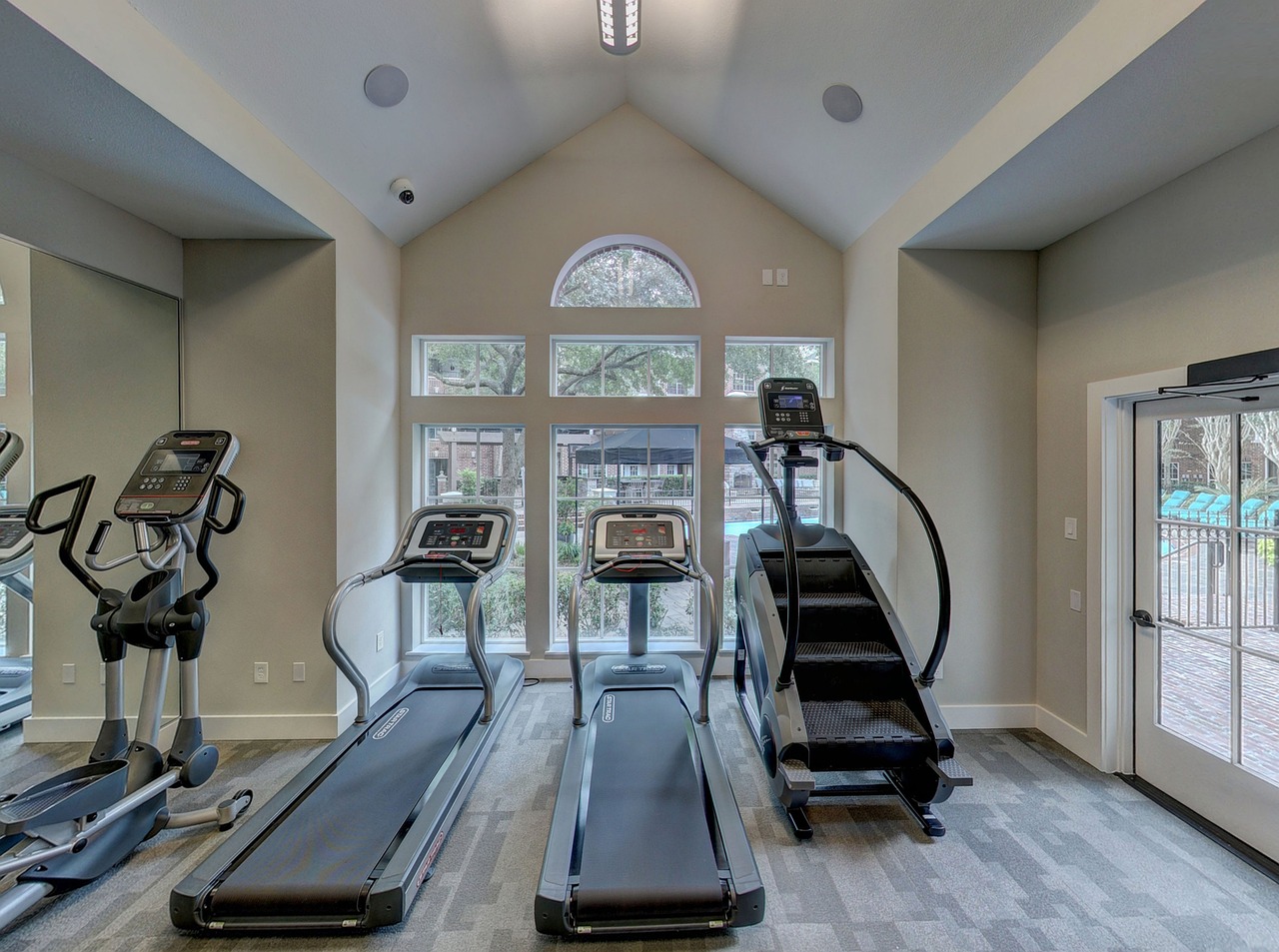Did you know that extreme temperatures can significantly impact your workout performance? Whether it’s the scorching heat of summer or the freezing cold of winter, maintaining a comfortable environment is crucial for effective exercise. Transforming your garage gym into a climate-controlled oasis can enhance your training experience and boost motivation. By installing proper heating, ventilation, and air conditioning systems tailored to your space, you can create an optimal workout setting year-round. Say goodbye to weather-related excuses and hello to consistent gains with a well-regulated temperature in your home gym.
Key Takeaways
- Prioritize Insulation: Proper insulation is key to regulating temperature in garage gyms; consider insulating walls, doors, and windows for optimal climate control.
- Select Suitable HVAC: Choose HVAC systems that are appropriate for gym spaces, ensuring efficient heating and cooling tailored to your training needs.
- Optimize Airflow: Enhance ventilation and airflow within the garage gym to maintain a comfortable workout environment and prevent overheating.
- Regular Maintenance: Schedule routine maintenance for HVAC systems to ensure they operate efficiently and effectively, prolonging their lifespan and reducing the risk of malfunctions.
- Consider Cost-Effective Solutions: Explore budget-friendly climate control options such as fans, dehumidifiers, portable AC units, and best practices to create a comfortable workout space without breaking the bank.
- Safety First: Prioritize safety when installing climate control systems by following manufacturer guidelines, checking for proper ventilation, and addressing any electrical concerns promptly.
Understanding Climate Control
Cooling Options
Cooling options play a crucial role. Portable air conditioners are versatile and easy to move around, providing flexibility in maintaining a comfortable temperature during workouts. Ductless mini-split systems offer efficient cooling without the need for complex ductwork installation, making them a convenient choice for garage gyms. Moreover, evaporative coolers can be a cost-effective solution for larger garage spaces, utilizing water evaporation to cool the air efficiently.
Proper insulation is essential when considering climate control in garage gyms. Insulating the walls and ceiling helps maintain consistent temperatures by reducing heat transfer and improving energy efficiency. Reflective insulation is another option worth considering as it minimizes radiant heat gain, ensuring that the gym stays at an optimal temperature for workouts.
HVAC Systems
HVAC systems provide comprehensive heating and cooling solutions for garage gyms. Installing a central HVAC system ensures effective temperature regulation throughout the space, offering both warmth during colder months and cooling relief in hot weather. Heat pumps are versatile options since they can both heat and cool indoor spaces efficiently, making them suitable for year-round use in your gym setup. Zoned HVAC systems take customization a step further by allowing different areas of the garage gym to have individualized temperature settings based on usage needs.
Cooling Garage Gyms
Effective Methods
Ventilation plays a crucial role in maintaining air quality within garage gyms. By installing exhaust fans, you can effectively eliminate hot air and improve overall airflow. Adding intake vents ensures proper ventilation, preventing the buildup of stale odors.
Ceiling fans are beneficial for distributing cool or warm air evenly throughout the space. During intense workouts, oscillating fans provide targeted airflow to keep you comfortable. Strategically placing box fans can further enhance overall air circulation in your garage gym.
Cooling in Summer
Safety should always be a top priority when considering cooling options for your garage gym during hot summer months. Installing carbon monoxide detectors is essential if you use fuel-burning equipment to prevent any health hazards. Having fire extinguishers easily accessible can help mitigate emergencies swiftly.
To ensure cost-efficiency while keeping your garage gym cool, opt for energy-efficient cooling solutions that will lead to long-term savings on electricity bills. Proper insulation is key in minimizing energy loss and maintaining a consistent temperature within the space. Programmable thermostats offer control over usage patterns, allowing you to optimize cooling based on your needs.
Insulating for Temperature Control
Types of Insulation
Insulating your garage gym is crucial for maintaining a comfortable workout environment. Fiberglass insulation is a popular choice as it effectively regulates temperature and is budget-friendly. On the other hand, spray foam insulation offers superior thermal resistance and seals gaps efficiently, ensuring minimal heat loss or gain. reflective foil insulation acts by reflecting radiant heat away from the space, making it easier to maintain consistent temperatures.
When considering insulating your garage gym, weigh the benefits that each type of insulation offers. Fiberglass provides cost-effective temperature regulation while spray foam ensures thorough sealing against external elements. Reflective foil insulation aids in reflecting radiant heat away from the gym space, contributing to stable temperatures during workouts.
Benefits of Insulation
- Energy Efficiency:
- Opting for energy-efficient HVAC systems can notably slash energy consumption.
- Sealing air leaks properly prevents unnecessary energy loss and boosts overall efficiency.
- Regular maintenance of HVAC equipment guarantees top-notch performance and enhanced energy efficiency.
Properly insulated garage gyms have a significant impact on workout performance and comfort levels. Maintaining an ideal temperature range creates an optimal setting where you can exercise comfortably without being hindered by extreme temperatures. Conversely, inadequate cooling or heating may dampen your motivation or intensity during workouts due to discomfort caused by unfavorable climate conditions.
Choosing HVAC for Garage Gyms
Best AC Options
When setting up a climate control system for your garage gym, considering the size of the space is crucial. A larger gym will require a more powerful air conditioning unit to effectively cool or heat the area. Take into account the climate conditions in your region. Warmer areas might need stronger cooling systems, while colder regions may prioritize heating options.
Budget constraints are also essential when selecting an AC unit for your garage gym. Opting for a system that fits within your financial limits ensures you get adequate temperature control without overspending.
- Factors to Consider:
- Size of the garage gym affects cooling and heating needs
- Climate conditions influence choice of cooling/heating options
- Budget plays a significant role in selecting appropriate system
Air conditioning offers precise temperature regulation, ensuring optimal comfort during workouts. It also aids in humidity removal, preventing mold growth and maintaining good indoor air quality. By keeping the environment cool, AC systems create an inviting atmosphere that promotes consistent exercise routines.
- Advantages of AC:
- Precise temperature control
- Humidity prevention and improved air quality
- Encourages regular workout routines
Heating and Cooling
When choosing between different HVAC systems for your garage gym, consider noise levels to avoid disruptions during workouts. Selecting models with lower decibel ratings can help maintain a peaceful exercise environment. Energy efficiency ratings such as SEER (Seasonal Energy Efficiency Ratio) are vital in determining long-term operating costs associated with running your climate control system efficiently.
Ensuring compatibility with smart home systems allows you to conveniently manage and schedule temperature adjustments remotely from any location.
Preparing for Climate Control Installation
Essential Steps
Before installing climate control in garage gyms, it’s crucial to assess insulation needs. Consider the cooling capacity required based on the gym’s size and usage. Hiring a professional HVAC technician ensures proper installation and compliance with safety standards.
For instance, if your garage gym is well-insulated, you might need a smaller cooling system compared to a poorly insulated space. A professional can accurately determine the appropriate size of the system needed for efficient cooling without unnecessary energy consumption.
It’s essential to hire an HVAC technician familiar with installing systems in non-traditional spaces like garages. They can ensure that all components are correctly installed, including ductwork and vents, guaranteeing optimal airflow and temperature distribution within the gym.
Storage Practices
When considering climate control installation, it’s vital to avoid storing items near vents or equipment that could obstruct airflow. This obstruction may lead to inefficient cooling or heating within the gym space.
Keeping workout equipment away from direct sunlight helps prevent overheating during warmer months when temperatures rise significantly inside garages. By organizing storage areas efficiently, you can maximize space utilization while maintaining proper ventilation throughout the gym.
Optimizing Garage Gym Environment
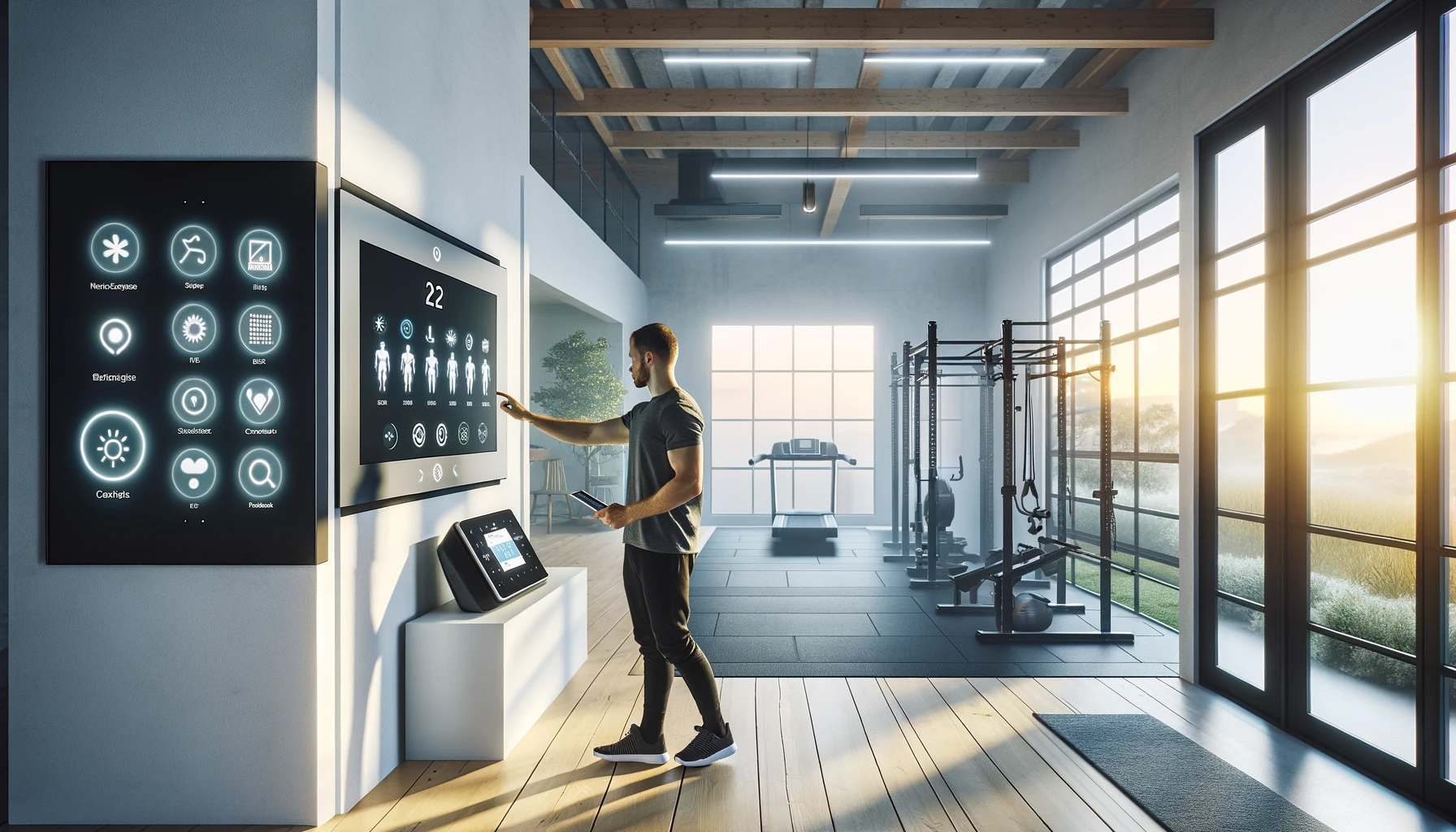
Maintaining Ideal Temperature
Setting the temperature in your garage gym is crucial for a comfortable workout. Adjust the thermostat to suit your preferences and ensure it stays consistent throughout your exercise routine. Consider using programmable thermostats that automatically regulate the temperature, allowing you to focus on your workouts without interruptions.
Regularly monitoring and adjusting the temperature will help create an optimal environment for physical activity. By keeping tabs on the settings, you can ensure that your workouts are not impacted by extreme temperatures. This practice promotes consistency in your training sessions and enhances overall performance.
Optimizing Air Quality
Proper ventilation plays a significant role in maintaining good air quality within your garage gym. Open doors and windows when possible to encourage airflow, especially during pleasant weather conditions. Utilize exhaust fans while working out to eliminate excess heat and humidity, creating a more comfortable atmosphere conducive to exercise.
To maintain optimal ventilation, cleaning air filters regularly is essential as clogged filters can hinder proper airflow circulation. By ensuring unobstructed ventilation pathways, you enhance air quality and prevent stuffiness or staleness in the gym environment.
Cost-Effective Climate Solutions
Insulation Techniques
Insulating your garage gym is crucial for maintaining a comfortable workout environment. Use spray foam insulation to seal any gaps around windows and doors, preventing heat loss in winter and keeping the space cool in summer. Another effective method is to install insulation batts or rolls in the wall cavities, providing thermal resistance that helps regulate temperature fluctuations. Applying reflective foil insulation on the garage door can significantly reduce heat transfer into or out of the gym.
Each technique plays a vital role in creating an energy-efficient space where you can exercise comfortably year-round. By combining these methods, you can effectively control the indoor climate without breaking the bank.
Efficient AC Use
To optimize your AC usage while working out in your garage gym, consider adjusting the temperature slightly higher than usual. This small change not only saves energy but also ensures a more sustainable approach to cooling your workout area. Moreover, make sure to close all doors and windows when using the AC unit to prevent cool air from escaping outside needlessly.
In addition to adjusting temperatures and sealing off openings during workouts, incorporating ceiling fans into your climate control strategy can enhance air circulation within the gym space. Ceiling fans work well with AC units by helping distribute cooled air more effectively throughout the room.
Safety and Maintenance
Installation Safety
When installing climate control in garage gyms, it is crucial to prioritize safety. Following the manufacturer’s guidelines and safety instructions is essential to ensure proper installation. Make sure a qualified electrician handles all electrical connections to guarantee safe operation. Before using any equipment, always test it thoroughly to verify its safe functionality.
- Follow manufacturer guidelines for installation
- Ensure proper electrical connections by a qualified electrician
- Test all equipment before use for safe operation
Maintenance Tips
Maintenance plays a vital role in keeping your climate control system running smoothly. Schedule regular maintenance checks for HVAC systems to maintain optimal performance levels. Cleaning or replacing air filters as recommended by the manufacturer helps improve air quality and efficiency. Regularly inspect insulation for any signs of damage or deterioration to prevent energy loss.
Summary
You’ve now got the lowdown on transforming your garage gym into a climate-controlled oasis. From cooling strategies to insulation tips and HVAC selection, you’re armed with the knowledge to create the ultimate workout space. Remember, prepping your gym for climate control, optimizing the environment, and considering cost-effective solutions are key steps in this process. Safety and maintenance should also be top of mind to ensure a long-lasting setup.
Now it’s time to roll up your sleeves and get to work! Take these insights, apply them to your garage gym project, and watch as your workout space transforms into a comfortable haven. Get ready to sweat it out in a cool environment or stay cozy during chilly sessions – all thanks to your newfound climate control wisdom! Your dream garage gym is within reach.
Frequently Asked Questions
How important is climate control in a garage gym setup?
Climate control is crucial for maintaining a comfortable workout environment. It helps regulate temperature and humidity levels, ensuring your workouts are enjoyable and effective.
What are some cost-effective solutions for climate control in garage gyms?
Using fans, insulation, and weather stripping can help regulate the temperature without breaking the bank. Creating good airflow by strategically placing vents or windows can also improve the overall climate.
Is it necessary to insulate a garage gym for better temperature control?
Insulating your garage gym is highly recommended as it helps retain heat during colder months and keeps the space cool in warmer seasons. Proper insulation ensures consistent temperatures for optimal workout conditions.
How do I choose the right HVAC system for my garage gym?
Consider factors like the size of your space, local climate conditions, energy efficiency ratings, and installation costs when selecting an HVAC system. Consulting with an expert can help you determine the best option based on your specific needs.
What safety measures should be taken when installing climate control systems in a garage gym?
Ensure proper ventilation to prevent carbon monoxide buildup from fuel-burning heaters. Regular maintenance checks on electrical components and systems are essential to prevent hazards like short circuits or overheating.
